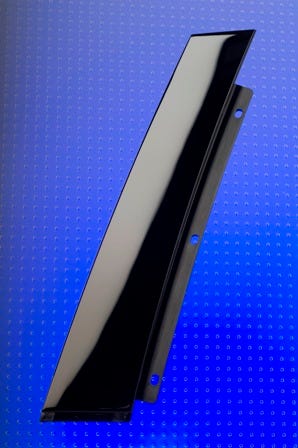High-gloss SAN replaces acrylic in auto exterior
Styrolution Group GmbH (Ludwigshafen, Germany), the new joint venture between BASF (Ludwigshafen) and INEOS (Lyndhurst, UK), has scored a success at automaker Skoda, with the OEM now using a modified SAN (styrene-acrylonitrile copolymer) material for its vehicle exteriors. The grade in question, Luran HH 120, combines the advantages of classic SAN with improved temperature and weathering resistance.
October 18, 2011
Styrolution Group GmbH (Ludwigshafen, Germany), the new joint venture between BASF (Ludwigshafen) and INEOS (Lyndhurst, UK), has scored a success at automaker Skoda, with the OEM now using a modified SAN (styrene-acrylonitrile copolymer) material for its vehicle exteriors. The grade in question, Luran HH 120, combines the advantages of classic SAN with improved temperature and weathering resistance.
|
Piano black SAN compound is tailored to meet weathering resistance and color depth requirements of auto industry. |
Dura Automotive Systems GmbH (Düsseldorf, Germany), a German subsidiary of the American automotive supplier of the same name, was a development partner for the material. The company manufactures A-, B- and C-pillars and has recently started using Luran HH 120 for serial production of the B-pillar cladding of the Skoda Superb.
In comparison to PMMA, the resin that was often used until now, the advantage of the Styrolution plastic is its very high heat deflection temperature: Luran HH 120 has a Vicat value (softening temperature) of 120°C [248°F]. The high transparency and the gloss of this material also allow it to be colored in what is called piano black, yielding a glossy, rich, jet-black tone.
The amorphous plastic had been virtually unknown in the automotive sector up to now. In addition to its high heat deflection temperature and its UV resistance, the material is also chemical resistant, stiff and resistant to scratches, and lends itself for other exterior vehicle applications such as mirror bodies, spoiler components and decorative trim as well as for frames and radio faceplates in the vehicle interior.-[email protected]
About the Author(s)
You May Also Like



